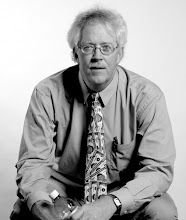Canyon de Chelly is also home to many Navajo families who have lived and farmed in the valley for centuries.
The entire area is known as Canyon de Chelly National Monument, and includes Canyon Del Muerto, the north fork, and Canyon de Chelly, the south fork. Non-Navajos are only allowed in the canyon as the guests of Navajo families who live there, or with a Navajo guide.
Our 2011 Navajo Oral History project group was fortunate to know the Lettie and Flemen Nave family well (Lettie was a featured elder in our 2010 project) who invited us to camp with them for two nights at their family's property right at the junction of the two main forks of the canyon.
On Friday, June 17, 2011, we met the Nave family at the National Monument Visitor's Center and prepared for the 3.5 mile hike down into the Canyon. Lettie and Flemen's daughter, Becky, made sack lunches for us, and Lettie's nephew, Thomas, was our guide.
Once we got to the Nave camp, we set up our tents and hung around the fire talking and learning.
Many of our group tried making frybread.
For dinner we enjoyed Navajo tacos: ground beef, lettuce, onions, cheese and salsa wrapped in frybread.
After dinner, another short hike led up to a ledge overlooking a box canyon which offered cool photography angles, and a fun echo.
Molly "Sweet Molly Purebred" Golden
Alex "Phish-monger" Fisher
Later, Lettie Nave taught us the Stick Game, including helping us learn how to count in Navajo. Her many years of teaching served her well, as she was very patient with our inability to pronounce all the many consonants and accents well.
(Ashdla' is the Navajo word for five)
(Michael Ruka won the game, and received a prize.)
(Josh Averbeck shows off the bracelet he won for taking second place in the Stick Game.)
(Michael Ruka models his Ghost Bead necklace; the first prize in the Stick Game. Lettie told us the ghost beads are made of juniper cedar nuts. The necklace wearer is assured of dream-free restful sleep. A few of us bought necklaces from local vendors the next day -- they work.)
Later in the evening, several in our group enjoyed smores around the camp fire, and we all turned in early-- tired after the long hike and high altitude air.
(Albert Haskie-- Miranda and Vernon Haskie's son-- cooks up a smore.)








































No comments:
Post a Comment